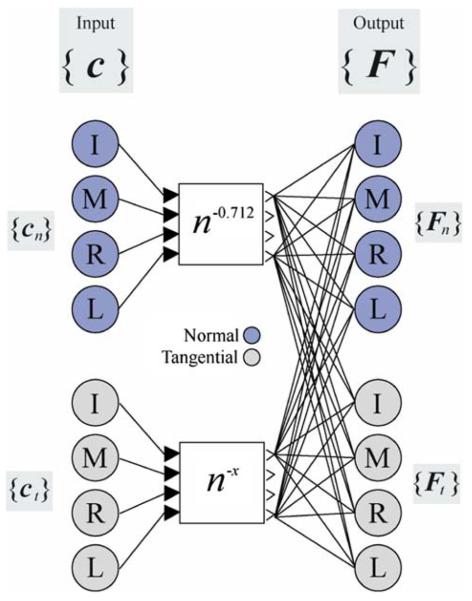Fig. 2.
Neural network architecture. The input commands c are mapped to output forces F. The vectors c and F both contain four normal (n flexion) and four tangential (t RUdeviation) elements, one element for each finger: index (I), middle (M), ring (R), and little (L). The commands have ranges (0, 1) and (−1, 1) for cn and ct, respectively. The normal commands cn are subject to a non-linear gain n−0.712 (Danion et al. 2003), where n is number of master fingers (see text). The tangential commands ct are subject to a separate gain n−x, the value of x was determined experimentally (see Results)

